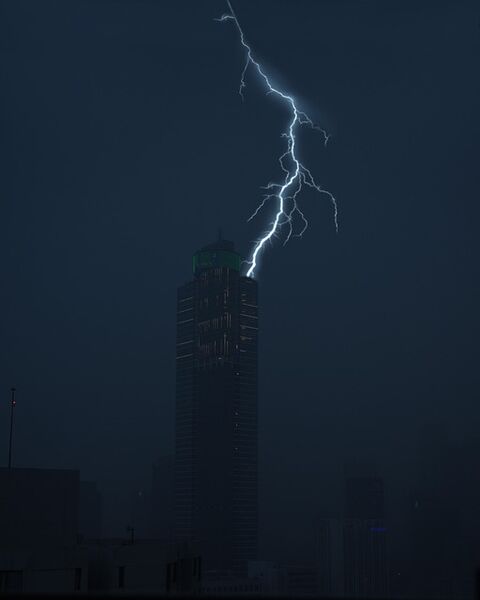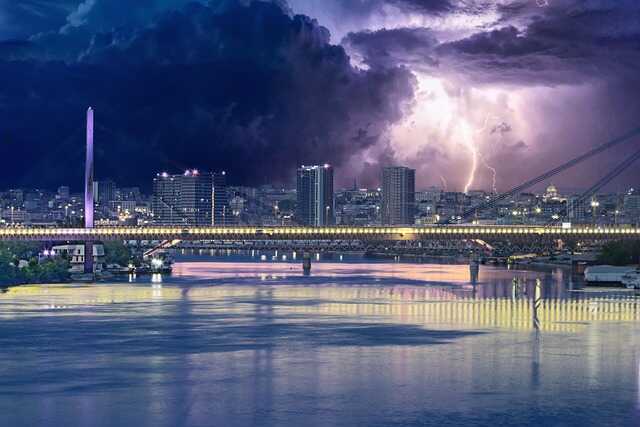The Sky Turned Deadly
Because of Deadly Lightning Strikes in July 2025, the skies over eastern India turned into agents of tragedy . At least 33 people lost their lives in a horrifying spike of lightning strikes triggered by intense monsoon storms.
Also, the affected regions—Odisha, West Bengal, and Jharkhand—are now gripped by fear and mourning.
In addtion, these deaths weren’t random. They are part of an alarming pattern increasingly tied to climate change, which is making India’s monsoon season more violent, less predictable, and deadlier than ever before.
But what exactly caused this deadly wave of lightning? And what we can make to prevent future tragedies?
Let’s break it down.
The Storm Behind the Statistics: What Happened and Where?
Over the course of a week in July, massive storm systems swept through the eastern belt of India, unleashing intense rainfall and frequent lightning strikes. Also, unlike in urban areas, where buildings and infrastructure provide some protection, rural communities were left brutally exposed.
Most of the deaths occurred outdoors:
- Farmers working in open fields
- Laborers returning home from daily wage jobs
- Children playing outside before the storms struck.
Many villagers reported hearing thunder only moments before flashes lit up the sky—too little warning, too late to take shelter.
States Affected:
- Odisha: Known for its agricultural heartland and coastal storms, it saw the highest fatalities.
- Jharkhand: With its dense forested villages and tribal areas, it lacked sufficient communication infrastructure.
- West Bengal: In low-lying areas, flooding compounded the risk by forcing people into exposed shelters or higher ground.
Why Are Deadly Lightning Strikes Increasing in India?
⚠️ The Climate Connection
Additionally, lightning is a natural weather phenomenon, but its frequency and intensity are changing dramatically. According to meteorologists and climate scientists:
“As the atmosphere gets warmer, it holds more moisture. This increases convection and results in more lightning-producing storms.”
The link is direct and devastating:
- Higher surface temperatures = more energetic storms
- More cloud buildup = more electrical charge separation
- More rural exposure = higher death toll
⚡Deadly Lightning Strikes: Scientific Observations
- A 1°C increase in temperature is estimated to boost lightning activity by 12% or more.
- India has seen a 34% rise in lightning strikes over the past decade, according to the Indian Meteorological Department.
- In addition the Bihar State Disaster Management Authority earlier warned that climate change is turning lightning into one of India’s deadliest natural disasters.
Deadly Lightning Strikes: The Human Cost More Than Just Numbers
Behind every one of the 33 deaths is a family torn apart. Mothers, fathers, children—all victims of something they didn’t cause and couldn’t avoid.
👨👩👧👦 Tragedy in the Fields
Also, in one village in Mayurbhanj district, Odisha, a farmer and his teenage son were struck while returning from the fields. His widow now must care for two younger children with no income and no emotional support.
👵 Elders and Orphans
Because of several elderly villagers—often left alone during the day while younger members work—were struck inside makeshift homes with tin roofs, which ironically conduct electricity.
😢 Shared Grief
In West Bengal, mass funerals were held. Community leaders spoke not just of sorrow, but of fear: “We don’t know what to do anymore. The sky has become our enemy.”
These aren’t isolated emotional reactions. They represent systemic failure to protect vulnerable populations.
Why Rural India Is So Vulnerable
Rural India accounts for 70% of the population, and yet it receives only a fraction of disaster preparedness funding.
🚫 Deadly Lightning Strikes Limited Early Warning Systems
Most villagers rely on local TV or word-of-mouth for weather alerts. In areas with no internet or mobile signals, real-time alerts are virtually non-existent.
🏚️ Lack of Infrastructure
- Very few schools or public buildings have lightning rods.
- Emergency shelters are scarce.
- Most homes are built with materials that offer no electrical resistance.
🚨 Slow Emergency Response
However, when disaster hits remote areas:
- Ambulances take hours to arrive
- Medical help is inadequate
- Power outages delay communication
Government Response: Steps Taken and Missed Opportunities

🗣️ Awareness Campaigns
In addtion, local governments and NGOs have started campaigns teaching villagers to:
- Avoid open fields during storms
- Stay away from trees
- Unplug electrical devices
📲Deadly Lightning Strikes: Technology-Based Solutions
Apps like Damini Lightning Alert have been introduced. But uptake is low due to:
- Low smartphone penetration
- Lack of digital literacy
- Language barriers (apps not localized for tribal dialects)
🚧 Infrastructure Lag
Despite warnings, budget allocation for lightning protection remains minimal. For example:
- Only 3% of schools in Odisha have lightning rods.
- Jharkhand has no state-level budget for lightning disaster mitigation.
What Needs to Be Done to Prevent Deadly Lightning Strikes?
✅ 1. Real-Time Warning Systems
Moreover, weather apps must be simplified, localized, and aggressively promoted. SMS alerts should be made mandatory and free, even on feature phones.
✅ 2. Protective Infrastructure
- Lightning rods must be installed in every rural school, clinic, and community center.
- State-funded programs should provide these at zero cost for the poorest villages.
✅ 3. Community Education
- First of all, schools should teach lightning safety like they teach fire drills.
- Local leaders must organize monthly meetings to discuss weather safety.
- Radio broadcasts in local dialects should warn people during storm alerts.
✅ 4. National Climate Strategy
India must include lightning disaster preparedness in its National Climate Action Plan and treat it with the same urgency as floods and droughts.
Deadly Lightning Strikes Lessons: Climate Change Is Already Here
However, India’s lightning crisis is not just India’s problem.
Countries across Sub-Saharan Africa, Southeast Asia, and Latin America are experiencing similar patterns: more heat, more storms, more lightning.
The 33 deaths in India are a red alert for the world.
Climate change doesn’t always arrive with floods and fire. Sometimes it strikes silently, from the sky.
Deadly Lightning Strikes: What You Can Do
🌱 Support Climate Resilience Efforts
First of all, donate to NGOs working in rural India on:
- Climate adaptation
- Lightning protection
- Disaster education
📢 Spread Awareness
Also, share this post with your network. Educate others about lightning safety, especially in regions vulnerable to sudden weather changes.
🧑⚖️ Advocate for Climate Action
- Push for global emissions reductions.
- Demand better climate financing for vulnerable nations.
- Call on leaders to include lightning disasters in their climate policy planning.
Deadly Lightning Strikes: Lives Lost, Lessons Learned
The 33 lives lost to lightning in eastern India are not just victims of weather—they’re victims of climate inaction, infrastructure neglect, and policy delay.
But there is still hope. Every death is a warning—and a responsibility.
Let’s treat lightning with the seriousness it demands.
Let’s equip our communities with the tools they need.
And let’s remember: preparedness is the difference between life and death when the sky begins to roar.

